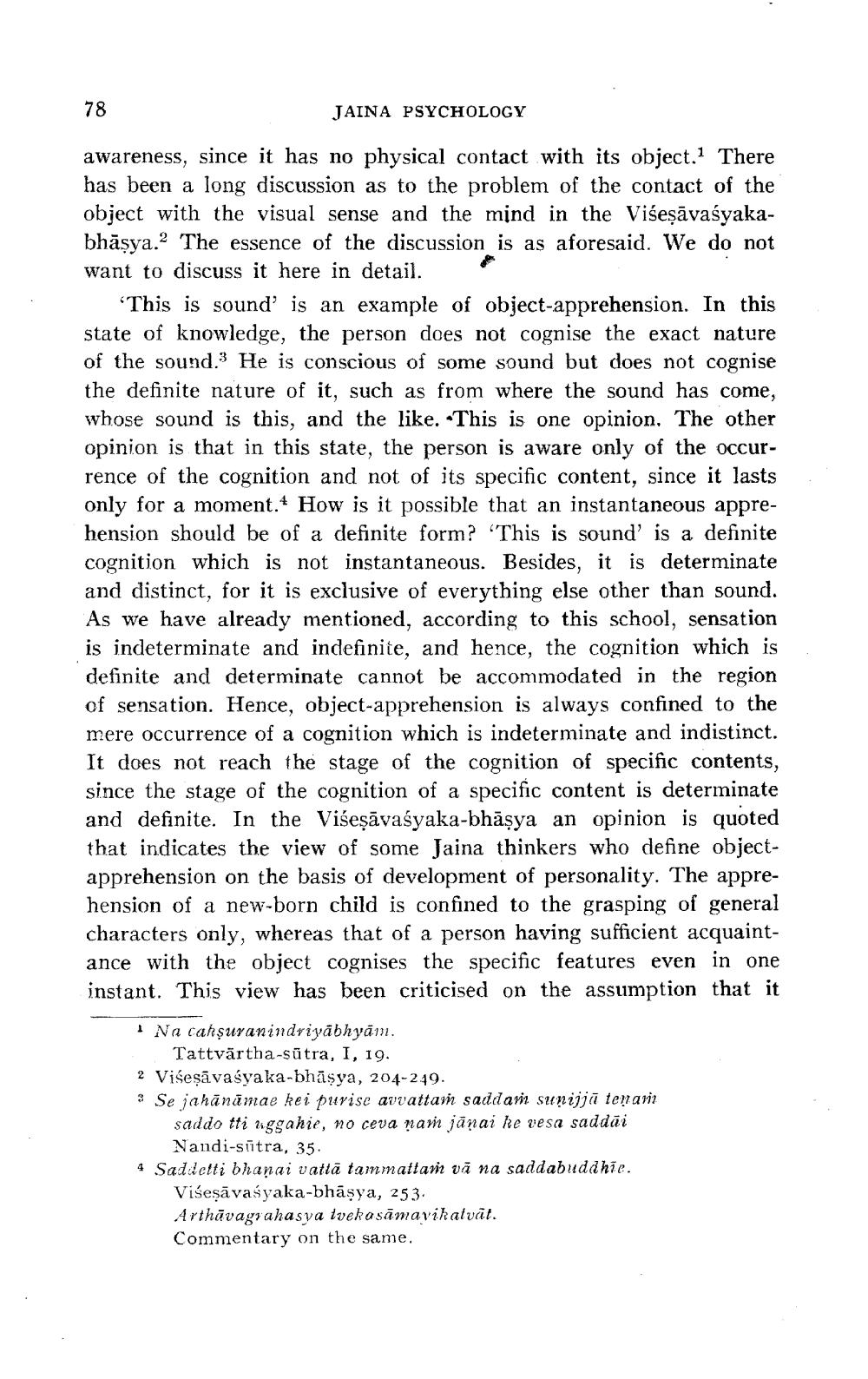________________
78
JAINA PSYCHOLOGY
awareness, since it has no physical contact with its object. There has been a long discussion as to the problem of the contact of the object with the visual sense and the mind in the Višeşāvaśyakabhāşya.The essence of the discussion is as aforesaid. We do not want to discuss it here in detail.
“This is sound' is an example of object-apprehension. In this state of knowledge, the person does not cognise the exact nature of the sound.3 He is conscious of some sound but does not cognise the definite nature of it, such as from where the sound has come, whose sound is this, and the like. This is one opinion. The other opinion is that in this state, the person is aware only of the occurrence of the cognition and not of its specific content, since it lasts only for a moment.4 How is it possible that an instantaneous apprehension should be of a definite form? 'This is sound' is a definite cognition which is not instantaneous. Besides, it is determinate and distinct, for it is exclusive of everything else other than sound. As we have already mentioned, according to this school, sensation is indeterminate and indefinite, and hence, the cognition which is definite and determinate cannot be accommodated in the region of sensation. Hence, object-apprehension is always confined to the mere occurrence of a cognition which is indeterminate and indistinct. It does not reach the stage of the cognition of specific contents, since the stage of the cognition of a specific content is determinate and definite. In the Višeşāvasyaka-bhāșya an opinion is quoted that indicates the view of some Jaina thinkers who define objectapprehension on the basis of development of personality. The apprehension of a new-born child is confined to the grasping of general characters only, whereas that of a person having sufficient acquaintance with the object cognises the specific features even in one instant. This view has been criticised on the assumption that it
Na cahşuranindriyäbhyām.
Tattvārtha-sūtra, I, 19. 2 Višeşāvasyaka-bhāsya, 204-249. : Se jahānāmae kei purise avvattam saddarii sunijjū tenari
saddo tti nggahie, no ceva nam jānai ke vesa saddõi
Nandi-sitra, 35. 4 Saddetti bhanai vattā tammattan vá na saddabuddhie.
Višeşāvasyaka-bhāşya, 253. Arthāvagrahasya tvekasāmavikatvát. Commentary on the same.




